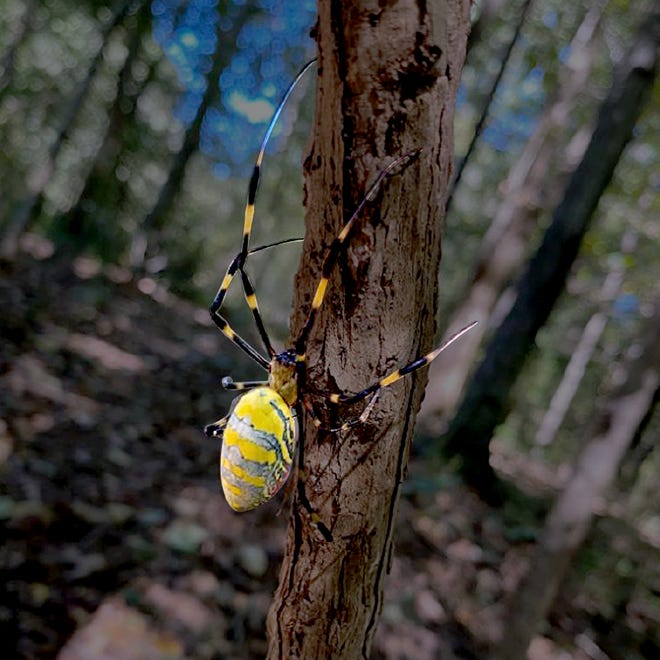Warmer temperatures are finally forecast and with it will come longer days and more time spent outdoors.
As flowers bloom and greenery becomes a seasonal staple, there are more things waiting for us in the days ahead.
Bugs.
Lots of them.
Some serve a purpose, but others are true pests. As spring heats up and brings us closer to summer, be on the lookout for these unwanted visitors:
1. Spotted Lanternfly
If you thought you saw enough of the spotted lanternfly last year, think again. Not only are they back, but this time they are bringing friends.
“Unfortunately, their population is slowly increasing,” said Christopher Wade, pesticides administrator at the Delaware Department of Agriculture. “I’m assuming there’s still going to be a large population of spotted lanternflies out there.”
Although there are many factors that contribute to how fruitful an insect population will be, the spotted lanternfly’s presence depends on how many eggs the insect laid during winter and how rainy it is in the warmer months when they hatch.
If those eggs aren’t killed or the bug isn’t eradicated while it is a nymph, the early stages of life, the problem has already increased tenfold.
“Once they have wings and they’re adults and can fly, it’s hard to keep them under control,” said Wade. He said the best way to get rid of this invasive species is to use systemic insecticides or squish them when you see them.
2. Lone Star Tick
With many species native to Delaware, another insect on your radar should be the tick.
The most common tick species in the area is the lone star tick, identifiable by a white dot on its back. Found all over the state, it is more common in Kent and Sussex counties.
And while it may be tiny, it sure is mighty.
“It’s described as being an aggressive biter,” said Ashley Kennedy, tick biologist at the Delaware Department of Natural Resources and Environmental Control. “The bite itself can be very painful, very itchy.”
A bite from a lone star tick could trigger flu-like illness or, in rare cases, alpha-gal syndrome, in which a person develops a food allergy to red meat and other products made from mammals such as dairy.
3. Black-legged/deer tick

The black-legged/deer tick is not as common as other species but is more likely to infect you if it bites you.
One of the illnesses it can cause is Lyme disease, a bacterial infection that can spread to your joints, heart and nervous system if not treated early.
4. American dog tick

The American dog tick is the least likely to make you sick, but a small percentage of them carry Rocky Mountain spotted fever, said Kennedy.
Rocky Mountain spotted fever is a bacterial disease that begins with symptoms such as fever, headache and rash. It can be deadly if it is not treated early on with the correct antibiotics.
5. Asian longhorned tick

The newest Delaware tick species, first spotted in 2019, is the Asian longhorned tick.
This invasive species has a female-only population that can lay eggs without needing a male and occasionally bites.
Regardless of what type of tick you may encounter, be cautious whenever you are walking in tall grasses, hiking in a forest or lounging in your backyard.
Some tips to avoid tick bites include applying repellents to your skin and clothing, wearing light colors to easily identify bugs crawling on you, tucking your pants into your socks when walking on trails and frequently checking yourself for any bugs that may have hitched a ride, said Kennedy.
If you do find a tick bite, the best thing to do is remove it quickly using a pair of tweezers, making sure to grab the tick slowly and as close to your skin as possible.
6. Stink bugs

Back again by not-so-popular demand is the stink bug.
Stink bugs usually squat in houses during the winter and only “wake up” if it is warm out. Now that we’re leaving cooler temperatures behind, expect to see a lot more of these little guys poking out of air vents or traipsing along windowsills, said Wade.
While there have been rumblings about parachuting arachnids and murder hornets around the country, the Joro spider and the Asian giant hornet have not been recorded in the First State, yet.

The Joro spider, known for its bright colors and large size, was first found in Georgia in 2013 and has kept its reach to the southern states so far but could spread further north eventually.
Despite the presence of other large wasp species in Delaware, the Asian giant hornet has only been spotted on the West Coast in Washington, said Wade.
LAST YEAR’S INVASIVE PLANTS:Gardeners beware: Watch out for these 5 invasive plants in Delaware this spring